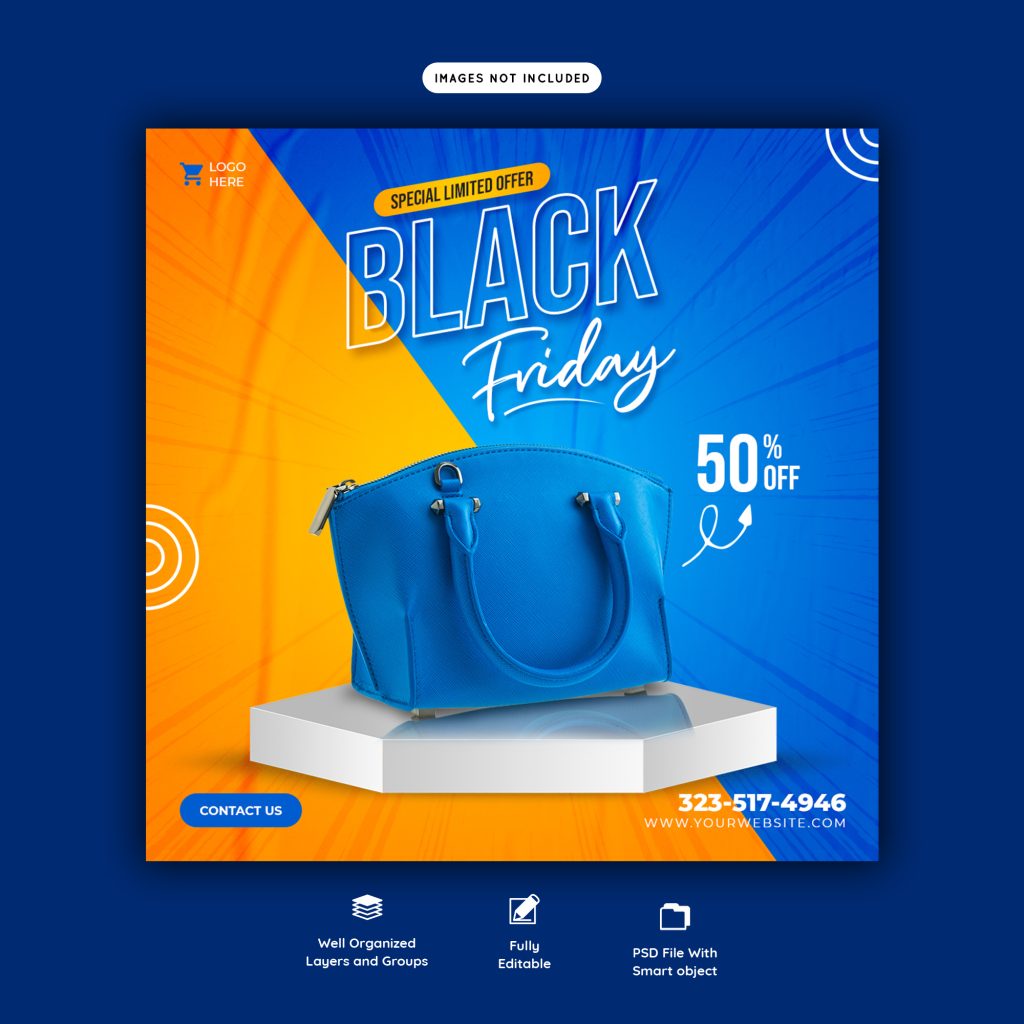Ad copy and visual assets are crucial elements of any advertising campaign. They are the first thing that customers see and they can make or break an ad’s success. Ad copy is the written text in an ad, while visual assets include images, videos, and infographics.

Ad copy plays an important role in attracting and engaging customers by using persuasive language and storytelling. It’s the words that make customers take an action, whether it’s clicking on the ad, visiting a website or making a purchase. Effective ad copy is able to grab the customer’s attention, communicate the benefits of the product or service, and persuade them to take action.
Visual assets, on the other hand, are responsible for catching customers’ attention and making the ad stand out from the competition. They can help to communicate the product or service’s features, benefits, and value proposition in a way that words alone cannot. They are especially important for ads in social media platforms, where users are scrolling through their feed quickly, a striking visual can stop them from scrolling and engaging with the ad.
In summary, ad copy and visual assets are crucial elements of any advertising campaign. Ad copy plays an important role in attracting and engaging customers by using persuasive language and storytelling. Visual assets are responsible for catching customers’ attention and making the ad stand out from the competition. They are the first thing that customers see and they can make or break an ad’s success. Together, ad copy and visual assets work in harmony to create an ad that not only catches the customer’s attention, but also persuades them to take action. Whether you’re advertising on social media, search engines, or traditional platforms, investing time and effort into crafting compelling ad copy and visual assets can help to increase conversions and drive sales.
Best practices for crafting compelling ad copy
Crafting compelling ad copy is essential for attracting and converting customers. To create effective ad copy, it’s important to understand the key elements that make up a successful ad.
- Headlines: The headline is the first thing that customers see and it’s crucial for grabbing their attention. It should be clear, concise, and benefit-driven. It should also include the main message of the ad, and entice the customer to read more.
- Body Text: The body text should provide more information about the product or service and explain the benefits. It should also include a call-to-action that encourages the customer to take the next step.
- Call-to-action: A call-to-action is the message that encourages customers to take a specific action. It should be clear, specific, and action-oriented. Examples include “Sign up now” or “Shop today”.
In addition to understanding the key elements of effective ad copy, it’s also important to use language and storytelling to engage and persuade potential customers.
- Use language that speaks to the customer’s needs, wants and pain points.
- Use storytelling to connect with the customer emotionally and make the ad more relatable.
- Use persuasive language that highlights the benefits of the product or service, and encourages the customer to take action.
- Use active voice and action words like “get, buy, discover”.
In summary, crafting compelling ad copy requires understanding the key elements of effective ad copy such as headlines, body text, and calls to action, and using language and storytelling to engage and persuade potential customers. It’s important to use language that speaks to the customer’s needs, wants and pain points, use storytelling to create an emotional connection, and use persuasive language to highlight the benefits of the product or service. It’s also important to use active voice and action words to encourage the customer to take action. By following these best practices, you can create ad copy that not only grabs the customer’s attention, but also persuades them to take action, resulting in increased conversions and sales.
Tips for using visual assets to attract attention
Visual assets are an essential part of any advertising campaign. They are responsible for catching customers’ attention and making the ad stand out from the competition. Here are some tips for using visual assets to attract attention:
Overview of different types of visual assets:

- Images: Images are a powerful way to communicate the product or service’s features and benefits. They can be used to showcase the product or service, create an emotional connection with the customer, and communicate the brand’s message.
- Videos: Videos are an engaging way to communicate the product or service’s features, benefits, and value proposition. They can be used to demonstrate the product or service in action, create an emotional connection with the customer, and communicate the brand’s message.
- Infographics: Infographics are a great way to present complex information in an easy-to-digest format. They can be used to explain how a product or service works, showcase statistics and data, and communicate the brand’s message.
How to use color, composition and other design elements:
Use color to create a visual hierarchy, guide the customer’s eye, and communicate the brand’s message.
- Use composition to create a visually pleasing and balanced design, guide the customer’s eye, and communicate the brand’s message.
- Use other design elements such as typography, shapes, and patterns to create visual interest, guide the customer’s eye, and communicate the brand’s message.
In summary, visual assets are an essential part of any advertising campaign, they are responsible for catching customers’ attention and making the ad stand out from the competition. There are different types of visual assets such as images, videos, and infographics that can be used in ads. To create visually striking ads, it’s important to use color, composition, and other design elements to create a visual hierarchy, guide the customer’s eye, and communicate the brand’s message.
Strategies for testing and optimizing ad copy and visual assets

Testing and optimizing ad copy and visual assets is an important part of any advertising campaign. By regularly testing and optimizing ad copy and visual assets, you can improve ad performance and increase conversions.
Overview of different methods for testing ad copy and visual assets:
- A/B testing: A/B testing is a method of comparing two versions of an ad (A and B) to determine which one performs better. It can be used to test different headlines, body text, and visual assets to see which one resonates more with the target audience.
- Heat mapping: Heat mapping is a method of tracking where customers are clicking on an ad. It can be used to determine which elements of an ad are most engaging and which elements need to be improved.
How to use data and analytics to improve ad performance and increase conversions:
- Use data and analytics to track ad performance, such as click-through rate (CTR), conversion rate, and bounce rate.
- Use data and analytics to identify which elements of an ad are working well and which elements need to be improved.
- Use data and analytics to identify patterns and trends in customer behavior, such as which ad copy and visual assets are resonating most with the target audience.
In summary, testing and optimizing ad copy and visual assets is an important part of any advertising campaign. There are different methods for testing ad copy and visual assets such as A/B testing and heat mapping.
In conclusion, ad copy and visual assets are crucial elements of any advertising campaign. They are the first thing that customers see and can make or break an ad’s success. To create effective ad copy and visual assets, it’s important to understand the key elements of a successful ad, use language and storytelling to engage and persuade potential customers, use color, composition and other design elements, regularly test and optimize ad copy and visual assets, and use data and analytics to improve ad performance and increase conversions. As a writer of this blog and as a digital agency, we can help you in creating effective ad copy and visual assets that will help your advertising campaign to be successful and achieve your desired outcome.
The key takeaways from the article are:
- Ad copy and visual assets are crucial elements of any advertising campaign.
- Ad copy plays an important role in attracting and engaging customers by using persuasive language and storytelling.
- Visual assets are responsible for catching customers’ attention and making the ad stand out from the competition.
- To create effective ad copy and visual assets, it’s important to understand the key elements of a successful ad, use language and storytelling, use color, composition and other design elements, regularly test and optimize ad copy and visual assets, and use data and analytics to improve ad performance and increase conversions.
To continue learning and improving ad copy and visual assets for maximum impact, it’s recommended to:
- Keep up with the latest trends and best practices in ad copy and visual assets.
- Test and experiment with different ad copy and visual assets to see what resonates most with your target audience.
- Use data and analytics to track ad performance and make informed decisions about how to improve ad copy and visual assets.
- Keep an eye on competitors and industry leaders, to learn from their successes and failures.
- Continuously seek feedback from customers and incorporate it into your ad copy and visual assets.
By following these recommendations, you can continue to learn and improve ad copy and visual assets for maximum impact and achieve better results in your advertising campaign.



